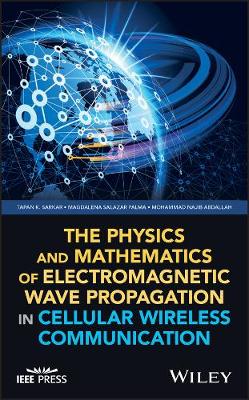Wiley - IEEE
2 total works
An important resource that examines the physical aspects of wireless communications based on mathematical and physical evidence
The Physics and Mathematics of Electromagnetic Wave Propagation in Cellular Wireless Communicationdescribes the electromagnetic principles for designing a cellular wireless system and includes the subtle electromagnetic principles that are often overlooked in designing such a system. This important text explores both the physics and mathematical concepts used in deploying antennas for transmission and reception of electromagnetic signals and examines how to select the proper methodology from a wide range of scenarios.
In this much-needed guide, the authors—noted experts in the field—explore the principle of electromagnetics as developed through the Maxwellian principles and describe the properties of an antenna in the frequency domain. The text also includes a review of the characterization of propagation path loss in a cellular wireless environment and examines ultrawideband antennas and the mechanisms of broadband transmission of both power and information. This important resource:
- Includes a discussion of the shortcomings of a MIMO system from both theoretical and practical aspects
- Demonstrates how to deploy base station antennas with better efficiency
- Validates the principle and the theoretical analysis of electromagnetic propagation in cellular wireless communication
- Contains results of experiments that are solidly grounded in mathematics and physics
Written for engineers, researchers, and educators who are or plan to work in the field, The Physics and Mathematics of Electromagnetic Wave Propagation in Cellular Wireless Communicationoffers an essential resource for understanding the principles underpinning wireless communications.
Modern Characterization of Electromagnetic Systems and its Associated Metrology
by Tapan K. Sarkar
New method for the characterization of electromagnetic wave dynamics
Modern Characterization of Electromagnetic Systems introduces a new method of characterizing electromagnetic wave dynamics and measurements based on modern computational and digital signal processing techniques. The techniques are described in terms of both principle and practice, so readers understand what they can achieve by utilizing them.
Additionally, modern signal processing algorithms are introduced in order to enhance the resolution and extract information from electromagnetic systems, including where it is not currently possible. For example, the author addresses the generation of non-minimum phase or transient response when given amplitude-only data.
- Presents modern computational concepts in electromagnetic system characterization
- Describes a solution to the generation of non-minimum phase from amplitude-only data
- Covers model-based parameter estimation and planar near-field to far-field transformation as well as spherical near-field to far-field transformation
Modern Characterization of Electromagnetic Systems is ideal for graduate students, researchers, and professionals working in the area of antenna measurement and design. It introduces and explains a new process related to their work efforts and studies.

